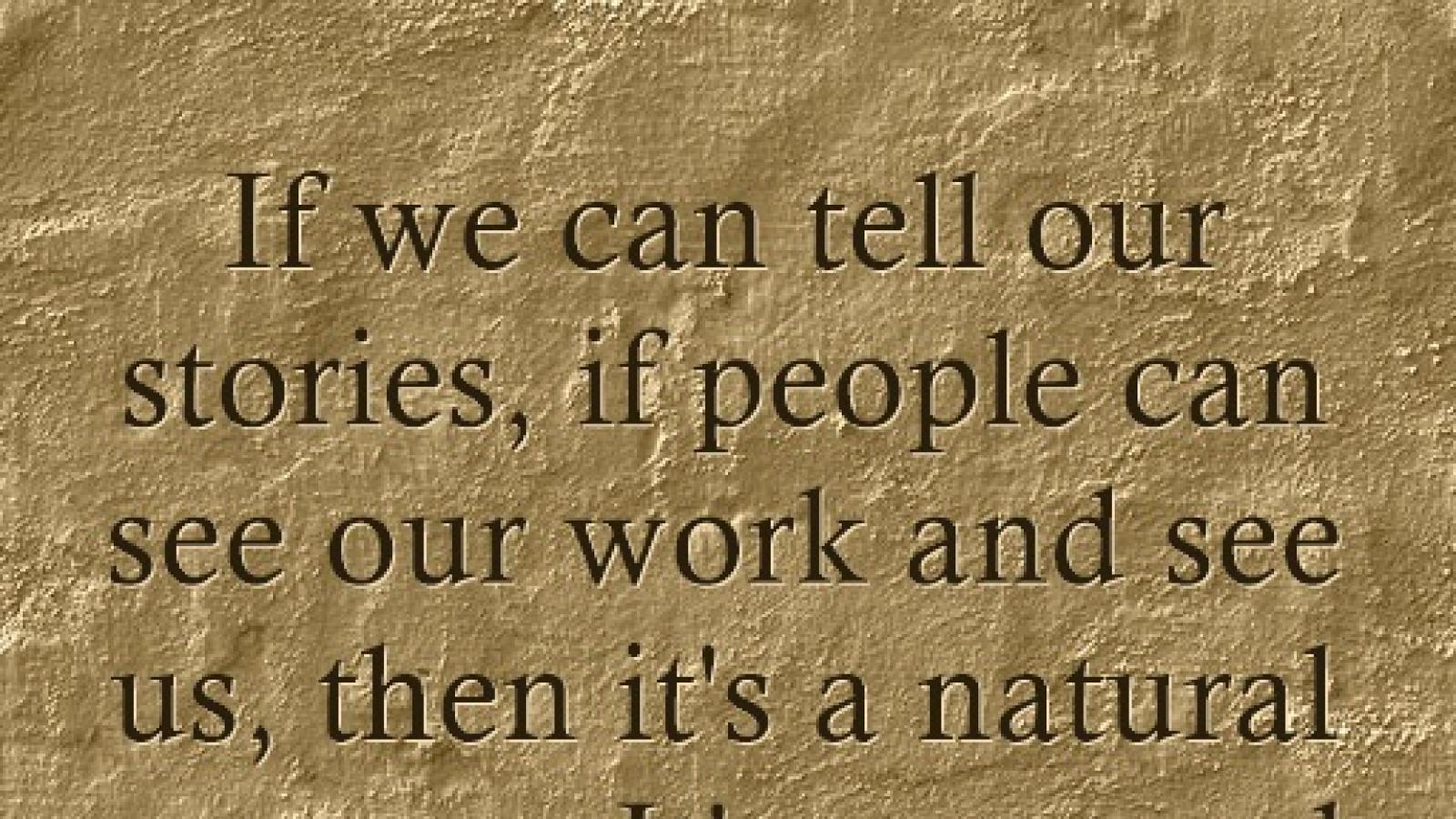Spotlight on AMERINDA

It isn’t all that long since blackface was common and images of war-whooping, tomahawk-wielding Native Americans weren’t given second thought. But increasingly, this country is beginning to open up a genuine discussion about what cultural appropriation in the arts looks like, and how minority populations—and their stories—can be more accurately and respectfully represented in the arts. For Diane Fraher, the solution begins with authentic exposure and representation on stage, on paper, and on film.
Fraher is a Native-American filmmaker and artist who founded, and continues to lead, American Indian Artists Inc. (AMERINDA), an NEA grantee. Founded in 1987 as an “alternative space” for Native American artists, the New York City-based AMERINDA has made its mission to “make the indigenous perspective in the arts available to a broad audience.” They do this by providing funding opportunities and professional consultations for artists, as well as by producing original work, from film and theater productions to publications and exhibitions.
Last week, I had the privilege of speaking with Fraher about her work, her organization, the challenges Native American artists continue to face in our country today, and how those outside the community can better ally themselves with Native artists.
NEA: Your organization facilitates interaction between various artistic disciplines within the Native American community, while also showcasing both traditional and contemporary art in those disciplines. How does your organization work to incorporate the disciplines in traditional and contemporary ways?
FRAHER: We are very much artist-driven. AMERINDA is an alternative space. What that means, for example, is we can give an opportunity for a Native-American playwright who's never been produced to present work. There's a plethora of work written by non-Native people about Native people [and] very minimal opportunities for Native Americans to do the same about their own culture and about themselves.
NEA: You are one of a very small group of women of color currently leading an arts organization in the United States. Can you talk about what it has been like to not only found but also lead an arts organization as a woman of color in the United States today?
FRAHER: I decided early on to do Native arts, which was a bold and difficult choice. What I think Native people have going for them when they are in leadership positions is we've had to adapt. A lot. I think being able to adapt and do it quickly and efficiently is really important to sustain anything that you're trying to do. I think that anyone in this position is going to face all the issues of being a part of an under-served community.
But I also think that a lot of it is it has heart. We have a very small annual budget, but we have so much heart that we're able to do all these things that wouldn't be possible otherwise. My entire life's career has been grounded in Native arts and working with my own community. For me, it's seamless.
NEA: Your organization has played a pivotal role in the dialogue around the performance of “red face” in America. Can you tell me more about that dialogue and how it’s progressing (or not) in 2015?
FRAHER: I look around me and I see how many other under-served and humiliated people in America have been liberated and continue to be liberated. And so I ask myself, 'Why are we not liberated from the same issues, from the same burden?’ It seems to me that [it’s] because there's so little known about us. If we can tell our stories, if people can see our work and see us, then it's a natural process. It's a natural journey for people to feel commonality with people.
And when you feel commonality with someone, it's hard to ridicule them or be mean-spirited toward them. Because they're just like you. As long as we're invisible, these kind of arrogant and destructive things are going to go on. But AMERINDA is an organization and it's not about any one artist. It's about all of us, and part of the platform of the organization is that "red face" is negative and it's a slur.
NEA: How can individuals outside of the Native American community better ally themselves toward Native American artists?
FRAHER: Support our work, just as you would support any other artist’s work. Buy a ticket to see our plays, come to our exhibitions, read our stories, see our films. I think you support your fellow artists by recognizing their contributions. That's probably the most important way.
NEA: What has been your proudest moment since founding AMERINDA in 1987?
FRAHER: I think it is whenever someone else shares with me the difference that it made to them. When a Native artist shares with me that something they were in made a difference to them emotionally, or in terms of their work, or something happened that would not have happened otherwise.




